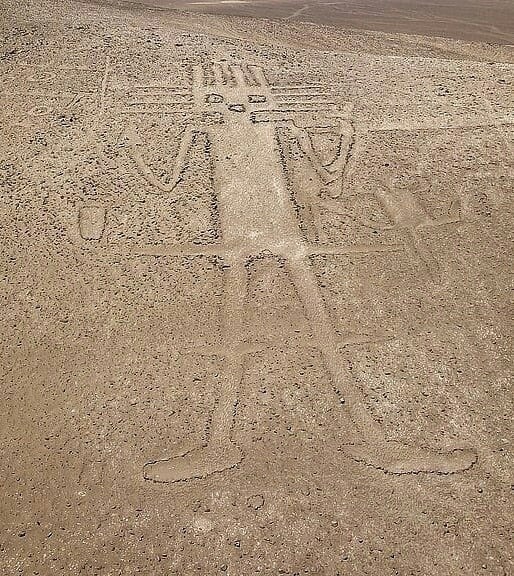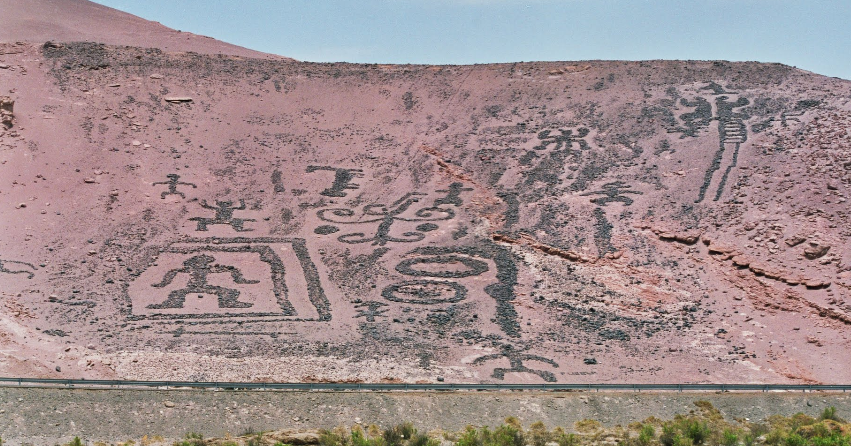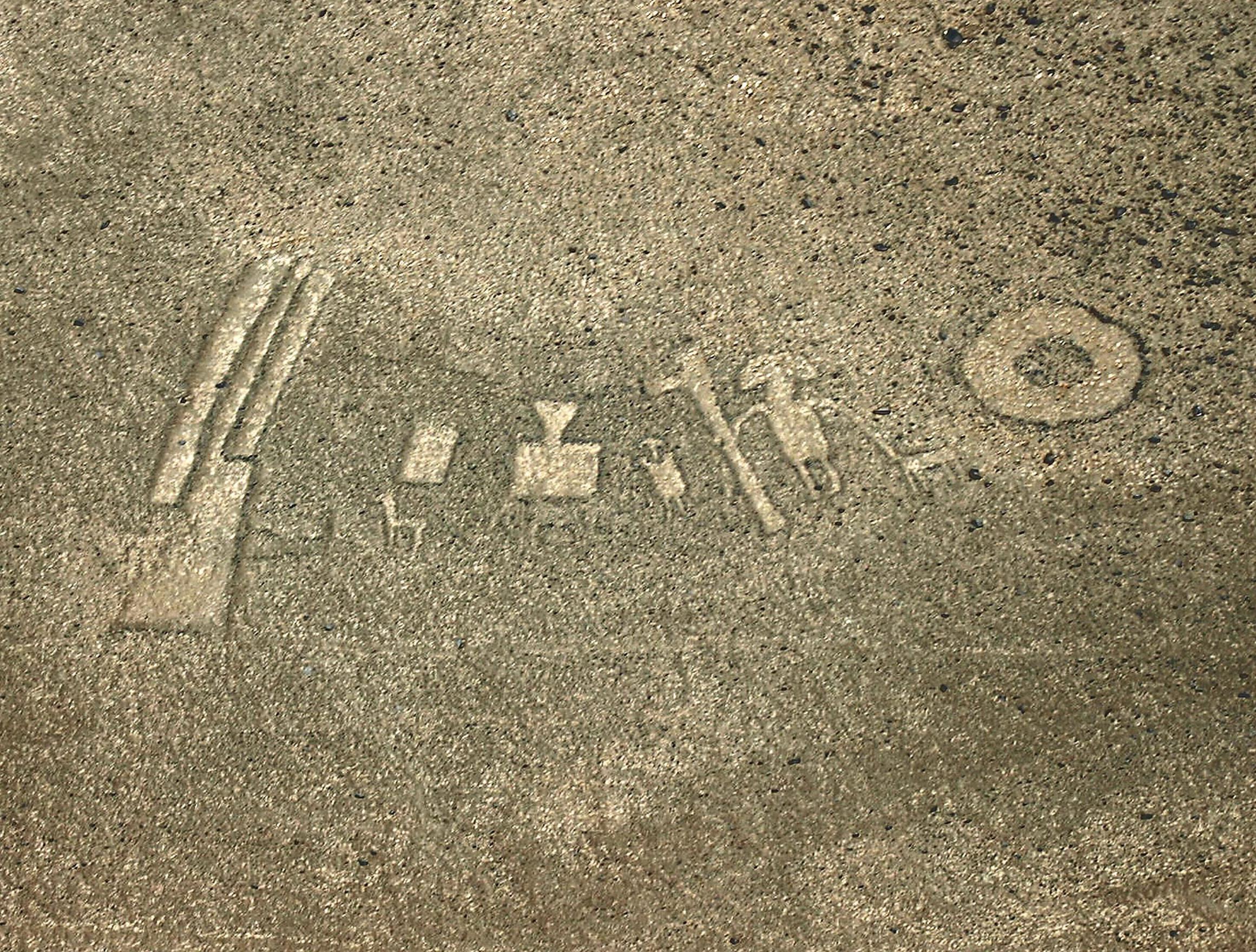The Atacama Giant

The Atacama Giant is the biggest anthropomorphic geoglyph in the world.
It is located in the Atacama Desert of Chile and represents a humanoid figure that stretches for about 119 meters in length on the northeast face of the Unita hill, about 15 km from the village of Huara, located in the Tamarugal Province of the Tarapacá Region.
It is generally considered to represent a local pre-Columbian divinity.
The Atacama Giant is also the largest pre-Columbian anthropomorphic depiction known yet.
The representation is probably the result of the work of various pre-Columbian cultures that followed one another in the area, in particular the Tiahuanaco and Inca cultures.
Interpretation is still a matter of discussion, with several theories proposed, with scholars speculating it could be an astronomical calendar because of its alignments.
As a matter of fact, it’s a precise indicator to know where the moon would set.
By knowing the moon cycle, they would be able to determine the day, the crop cycle, and the season.
The points on the top and side of the head would say what season it would be depending on their alignment with the moon, which was important in determining when the rainy season would come in the barren Atacama desert.
The Chiza Geoglyphs

Overall, more than 5,000 geoglyphs have been discovered in the Atacama Desert in the last three decades, as they were created in the desert between the cities of Antofagasta and Arica, ranging from 33 to 1,000 feet (10 to 300 meters) in size, far away from the sites of ancient settlements.
Some of them are located in the area known as Cuesta de Chiza, in the Tarapacá Region of Chile.
Several of them represent enigmatic anthropomorphic figures with elongated or oval heads along with geometric patterns.

